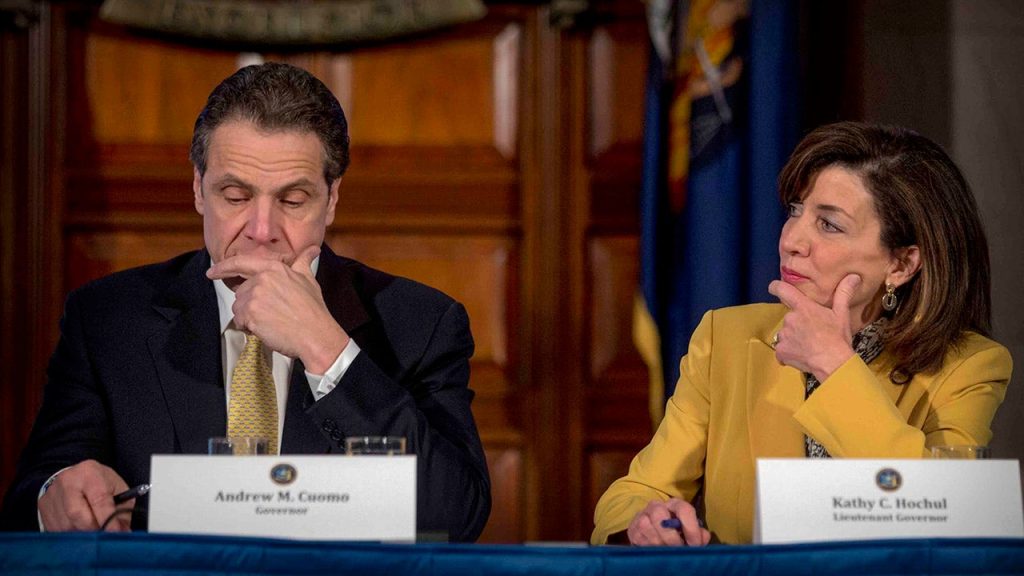Former New York Governor Andrew Cuomo, a key figure in the development and passage of New York City’s congestion pricing plan, has expressed reservations about the timing of its implementation. While maintaining his support for the policy, which aims to reduce traffic congestion and fund mass transit improvements by charging drivers entering Manhattan’s central business district, Cuomo argues that the current state of the city’s subway system and the ongoing recovery from the COVID-19 pandemic necessitate a data-driven study to assess the potential impact and determine the optimal timing for such a significant policy shift. He emphasizes that the original plan, conceived during his tenure and in collaboration with then-Mayor Bill de Blasio, was predicated on a safe and reliable subway system and a thriving city center, conditions that he believes are currently absent.
Cuomo’s concerns center around the public’s perceived lack of confidence in the subway system, fueled by incidents of crime and violence, and the fragility of New York City’s post-pandemic recovery. He argues that congestion pricing, designed to incentivize subway use, will be ineffective if people feel unsafe underground. He points to a stark contrast between the current climate and the conditions in 2019, when the plan was initially envisioned, citing increased crime, homelessness, and the option of remote work as factors that could negatively impact the policy’s effectiveness. He underscores the need for a comprehensive study based on factual data to avoid potential harm to the city’s ongoing recovery efforts.
Cuomo’s successor, Governor Kathy Hochul, however, remains steadfast in her commitment to implementing the congestion pricing plan. Hochul highlights the reduced toll rate of $9, down from the initially proposed $15, as a cost-saving measure for drivers and emphasizes the anticipated improvements to subway service that the revenue generated by the tolls will fund. She portrays the plan as a crucial step towards alleviating traffic congestion, reducing pollution, and enhancing public transportation for millions of New Yorkers. MTA Chairman Janno Lieber echoes Hochul’s sentiments, emphasizing the benefits of cleaner air, safer streets, and reduced gridlock, while pointing to recent upgrades on the 7 and L subway lines as evidence of ongoing improvements to the transit system.
This difference in approach has sparked a public disagreement between the current and former governors. Hochul’s administration, through MTA spokesperson Aaron Donovan, has accused Cuomo of “flip-flopping” and asserts that delaying the implementation of congestion pricing would deprive the subway system of vital funding necessary to address decades of underinvestment. They argue that the $15 fee was established under Hochul’s leadership, not Cuomo’s. Cuomo’s camp, in turn, accuses Hochul of attempting to rewrite history and taking credit for initiatives undertaken during Cuomo’s three terms, such as the Moynihan Train Hall, the Second Avenue Subway extension, and repairs to the L train. They maintain that Cuomo laid the groundwork for these projects and that Hochul merely “cut the ribbons.”
Cuomo’s call for a pause on congestion pricing has garnered support from some New York Republicans, who advocate for the complete elimination of the plan. However, Cuomo himself, while expressing reservations about the timing, remains a proponent of congestion pricing in principle, distinguishing his position from the outright opposition of the GOP. The implementation of the congestion pricing plan adds a new layer of complexity for commuters, particularly those traveling from New Jersey who already pay Port Authority tolls to cross the Hudson River. Outer-borough commuters crossing the East River will also face tolls, although they will receive a slight credit towards their congestion fee. Drivers using the FDR Drive or the West Side Highway will avoid the charge unless they exit onto surface streets within the congestion zone.
This debate over congestion pricing unfolds against a backdrop of broader concerns about the state of New York City’s public transportation system, the ongoing recovery from the pandemic, and the political dynamics between the current and former governors. Cuomo’s concerns, while raising valid points about public safety and the city’s recovery trajectory, are seen by some as politically motivated, given his potential interest in running for mayor in 2025. Hochul, on the other hand, faces pressure to deliver on promises of improved public transit and address the city’s persistent traffic congestion. The clashing perspectives highlight the complex challenges involved in balancing competing priorities and implementing major policy changes in a dynamic urban environment.

